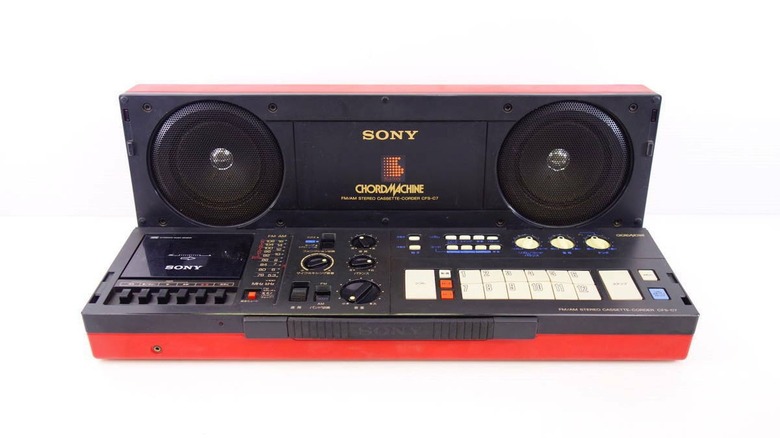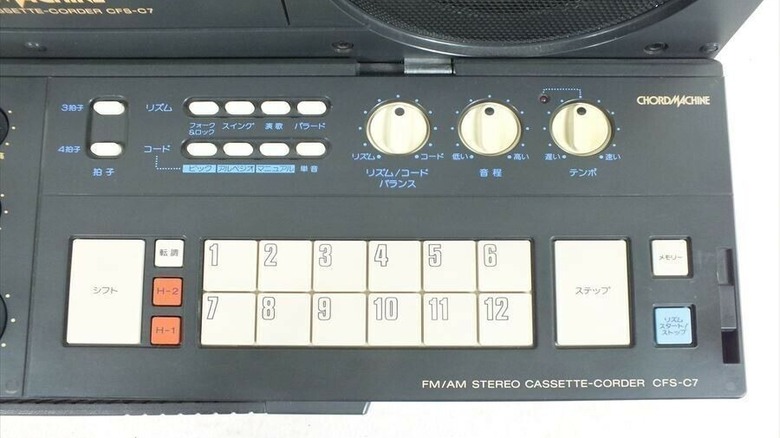Sony's Boombox Groovebox Hybrid That Never Quite Caught On
The late 1970s and early 1980s were indeed a glorious time to be alive. Growing up in that era exposed us to a veritable treasure trove of consumer electronics that quite literally went on to not only shape our lives but revolutionize the world.
In 1977 Atari brought arcade games to the home when it gave us the Atari 2600. In 1978 Texas Instruments released the Speak & Spell, the first commercially marketed speech-synthesis device/toy aimed at helping kids learn to speak. And spell. The following year Sony released the Walkman: The first commercially available, personal, portable stereo cassette player.
Commodore Business Machine released its 8-bit personal computer known as the Commodore 64 in 1982. That same year Sony dropped the first compact disc (CD) player in Japan. A year later (1983), it went on sale in the U.S with an eye-popping, wallet-busting MSRP of $1,000. In 1984 Apple released the first Macintosh. Who can forget that crazy Orwellian Big Brother commercial shown during Super Bowl XVIII, directed by none other than Ridley Scott?
But not every product was a hit. With so many new gadgets coming out at breakneck pace competing for our attention, not to mention our money, not every product is memorable. One such gadget was the Sony CFS-C7 Chord Machine Boombox Portable Cassette Tape Recorder, released in 1982 and only in Japan.
Groove to the beat of your own synthesized drum thingy
As the mouthful of a name implies, the Chord Machine was an amalgam of things. At the heart of this clamshell conglomerate was a conventional "boombox" with all the customary features of the day, including a detachable speaker box that had to be hard-wired to the central unit. Remember, this was long before Bluetooth or Wi-Fi existed. It also has a full-frequency AM/FM stereo radio (complete with a hidden antenna that could be pulled out and extended), a built-in cassette player, and a recorder — all the usual stuff.
What wasn't so standard was the addition of an entirely different capability, what we know today as a "groovebox." The term, however, didn't come into common parlance until 1996 when Roland released its MC-303 Groovebox. In simplest terms, a groovebox is a device used in "the production of live, loop-based electronic music," sometimes referred to as a drum machine or sampler.
And that's precisely what the other side of the machine did. The most eye-catching feature is the large buttons numbered one through twelve, which, when pressed, play different chords or tones. Shift buttons allow the musician or DJ to change the octaves on those pre-programmed sounds. The CFS-C7 also includes a drum machine, because who doesn't love those? It has four different preset rhythms and beats, four preset chord options, and 3x and 4x buttons. Users can also alter the beats per minute, adjust the sound balance between chords and rhythms, and control the pitch of the notes with respective turn dial buttons.
The one Sony gadget that fell by the wayside
The machine only allowed one note to be played at a time, so if the user pushed two different buttons simultaneously, it wouldn't give you a cool dual sound. It has multiple plugs for headphones, a microphone or guitar, and a remote control foot pedal (sold separately). The cassette feature allows you to record everything you play on or through the gizmo, including the radio, microphone, and groovebox. This musical behemoth is powered via 100 volt AC power plug, DC 9-volt plug, or six gargantuan D-cell batteries.
If you're old enough to remember or like dabbling in "ancient" tech, the sounds produced by the "chord" machine are basically nothing more than MIDI (Musical Instrument Digital Interface).
In the end, Sony's CFS-C7 Chord Machine Boombox Portable Cassette Tape Recorder tried to do too many things all at once. It was ahead of its time. However, given the golden age of "everyone's a DJ" we live in today, and the fact that there is a market for synthesizers and grooveboxes, a current generation Chord Machine with all the latest tech bells and whistles might just work this time around.

